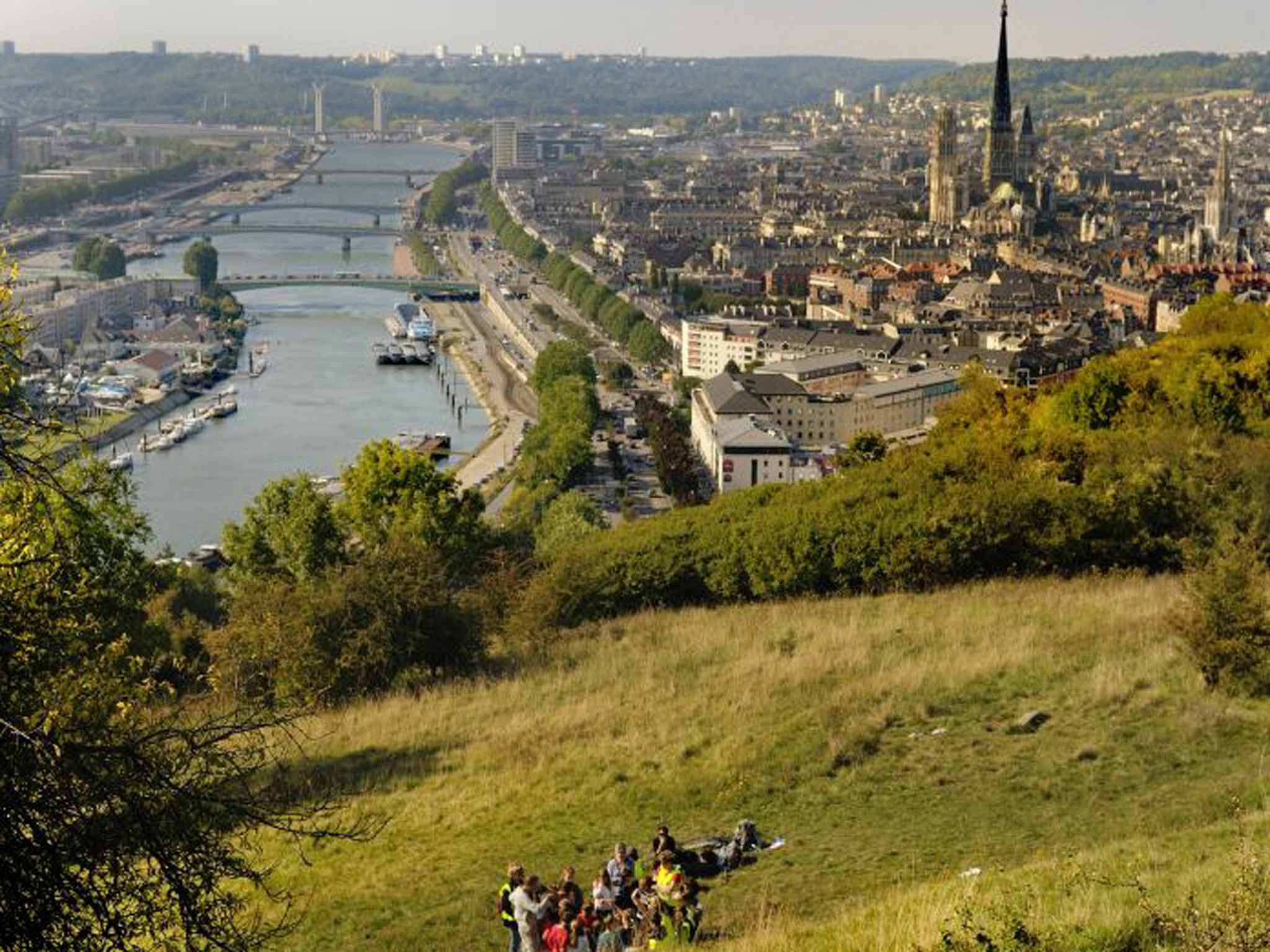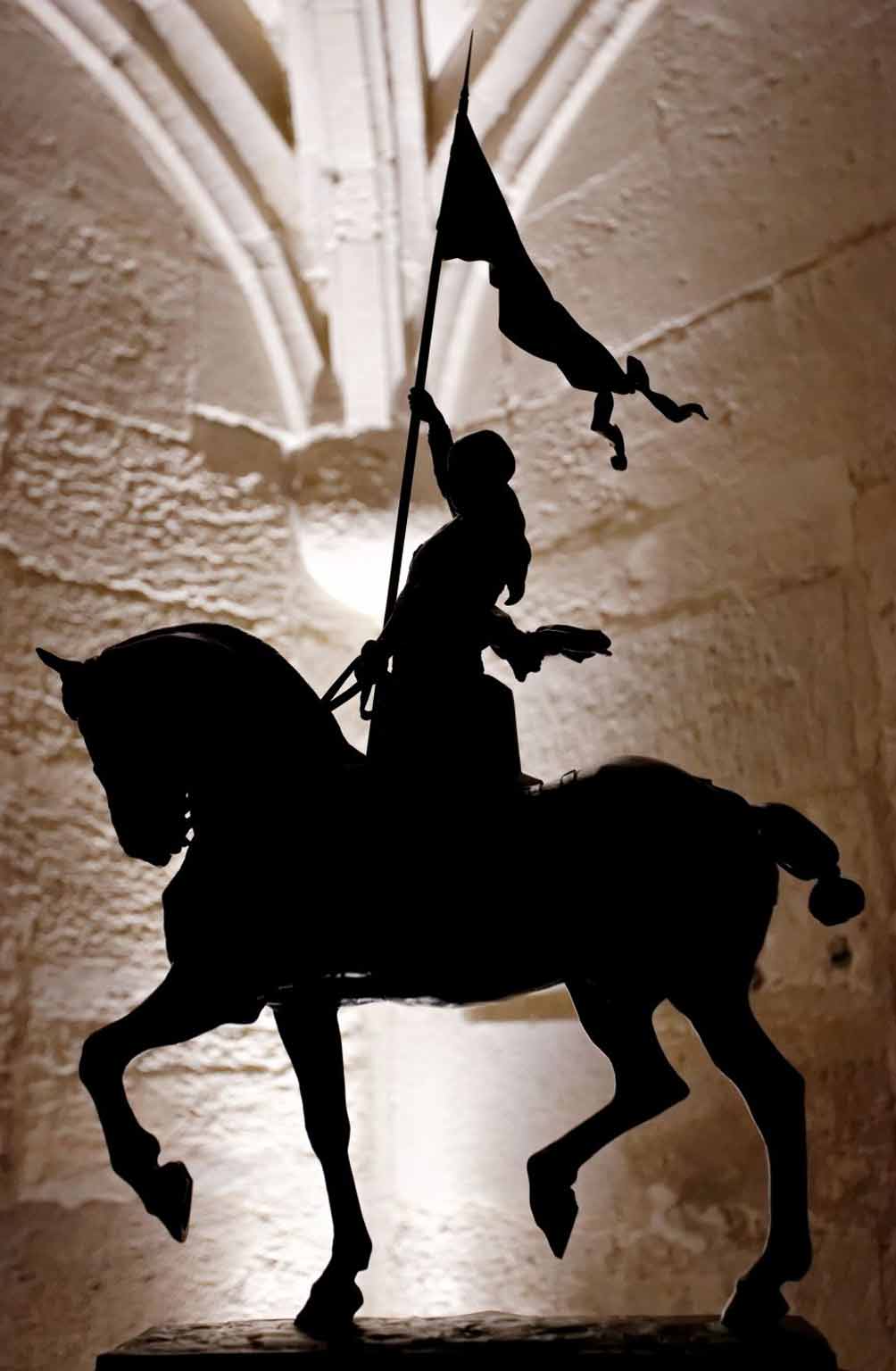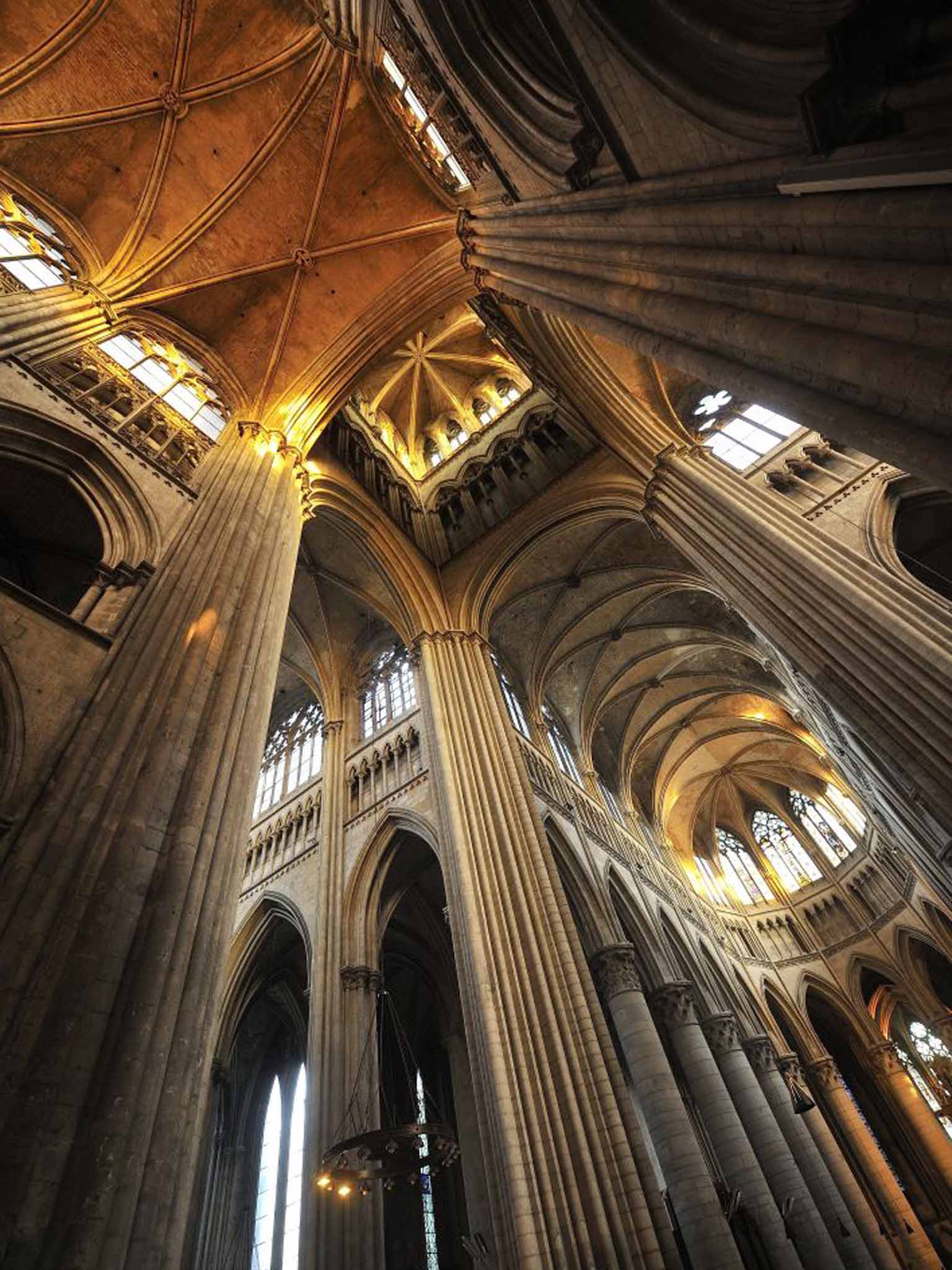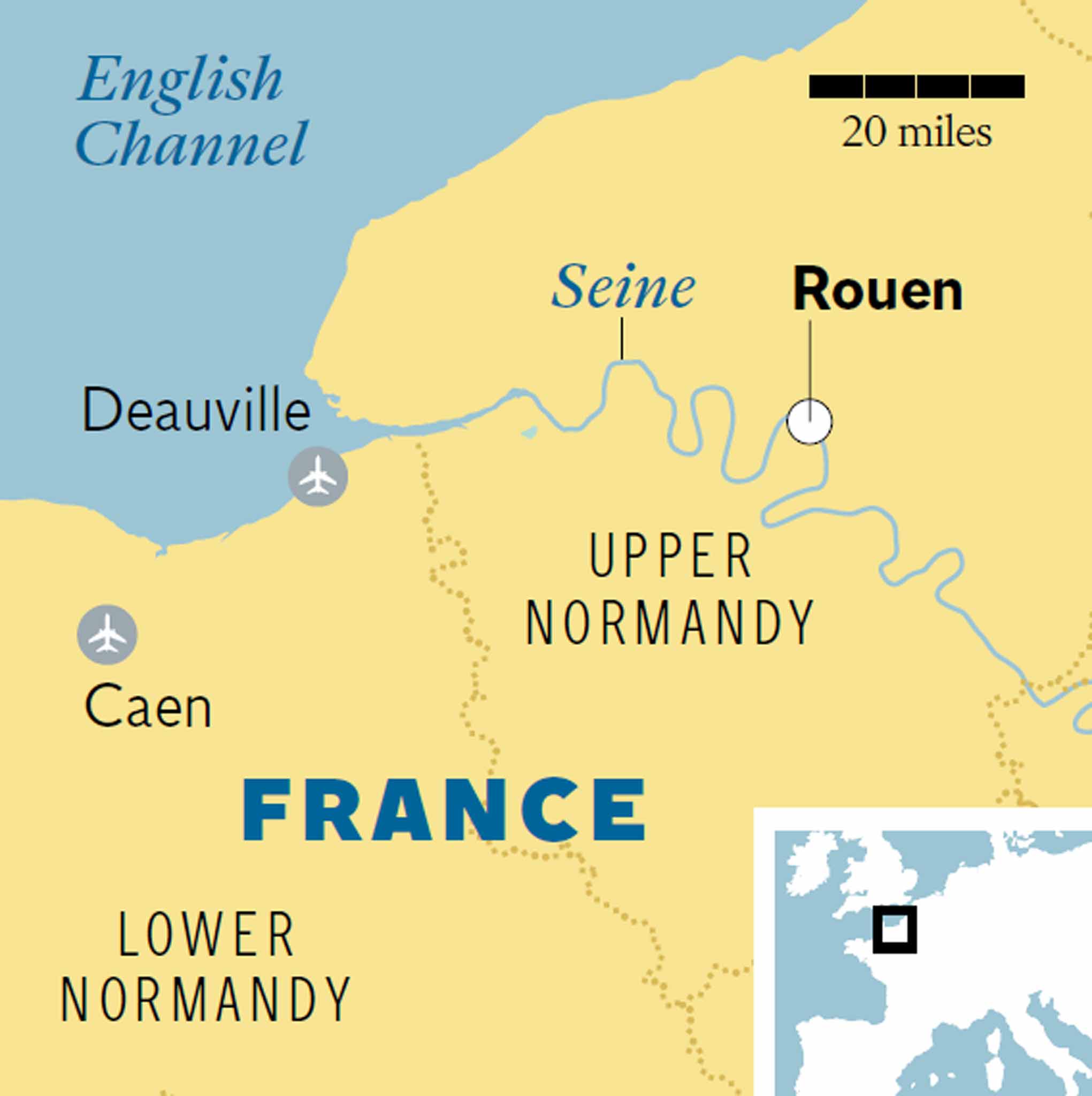The Independent's journalism is supported by our readers. When you purchase through links on our site, we may earn commission.
Joan of Arc remembered at a new museum in Rouen
A new museum brings France's greatest heroine back to life. Chris Leadbeater takes a tour

Wandering the Rue Saint-Romain in the mild chill of an early autumn morning, I manage to overlook the address I am seeking. The lane is a fine, preserved example of Rouen's medieval heart, all cobbles, timber frames and overhanging eaves – and the past lingers so pervasively that I walk straight by the Historial Jeanne D'Arc, its oak door camouflaged on a street where every building appears to be a survivor from the 15th century.
This, the prettiest of Normandy's cities – its noble cathedral painted so memorably by Monet – has long been linked to Joan of Arc. It was here, after all, that she was burned at the stake for heresy on 30 May 1431.
You can stand in the Place du Vieux Marché, where the site of the pyre is marked by a simple sign. You can enter the next-door Eglise St Jeanne d'Arc – a church of clunky modernity, completed in 1979, which cares for the Catholic legacy of a woman who was canonised in 1920. But the facts behind a figure who changed the course of the Hundred Years War and medieval Europe have traditionally been hard to source here in Rouen. A cynic might suggest that, even now, the city has been reluctant to discuss its part in the execution of the 19-year-old girl who helped to spark the liberation of her nation from English occupation.

Any such accusations were silenced earlier this year with the opening of the Historial. That the museum has arrived in the year that marks the 600th anniversary of the Battle of Agincourt (on 25 October 1415) is more than appropriate because it was the seismic defeat to Henry V's forces and the injection of the English monarch's bloodline into the queue for the French throne that dragged Joan of Arc into harm's way. She emerged in Domrémy, in what is now Lorraine, in January 1429 – a peasant worker convinced she had divine orders to free France. Her breaking of the English siege of Orléans in May that year was pivotal – but it would not save her from capture, an unwinnable trial, and a brutal demise near the north bank of the Seine.
Poignantly, the Historial sits within Rouen's Archbishop's Palace, where the verdict was handed down in 1431 – and the arena where she was exonerated via a posthumous retrial in 1456. In doing so, it achieves two aims – not only analysing Joan's story in the city that most owes her an explanation, but also rehabilitating a fine building that before had been scarcely more than a shell.
In 2012, I made a journey to Rouen for this newspaper, to trace the tale of the "Maid of Orléans" on the 600th anniversary of her birth and encountered a wreck. Then the Archbishop's Palace was a ruin with holes in its floor and dustsheets thrown over its furniture.
Now, visitors are taken on a multimedia tour that guides them through both the palace and its central subject in chronological order. Thus Joan's early years and growing self-belief are recounted in a 13th-century crypt – voices from her childhood remembering a quiet young woman. Her foray to Chinon and meeting with a wary Charles VII are replayed in the palace's kitchen, footage beamed into huge fireplaces, which were once used to prepare food for vast banquets.
The highlight is reserved for the attic. Visitors sit within a circle of screens, where Joan's last hours come into focus. Questions are fired from all sides, these legal thrusts interspersed with the vision of Ingrid Bergman re-energising her for Hollywood in 1948. And when the flames rise, they do so around you, a wall of orange and noise that is strangely, movingly discomfiting.

Beyond, an antechamber delivers a digital postscript, the quashing of the heresy verdict via the 1456 retrial, which, crucially, was conducted in what had become a French Rouen, rather than a city under English authority. Then you step into the closing set of rooms where Joan's legend comes under the microscope – not least how she morphed into a French figurehead: her combination of pious expression and armoured defiance copied by Napoleon for a coronation portrait in 1804; or directing French soldiers into battle on a propaganda image in 1940. Further context explores her depiction in cinema and literature, and how she was taken up by the Suffragette movement.
The Historial says nothing on the most glaring issue – whether this stubborn teenager was a holy warrior or merely a lucky winner whose self- confidence had a revitalising effect on a desperate France. But I exit feeling that a wrong has been partially righted. And this sensation stays with me as I amble down Rue du Gros Horloge to the Place du Vieux Marché and the Eglise St Jeanne d'Arc. Maybe it is the sunlight that pierces the stained glass, but this elaborate oddity of a church no longer seems such a sorrowful lone gesture.

Getting there
Rouen can be accessed by rail from London St Pancras via Paris (0343 218 6186; eurostar.com). You can also fly to Caen from Southend with Flybe (0371 700 2000; flybe.com) or to Deauville from Stansted with Ryanair (0871 246 0000; ryanair.com); or take the ferry from Portsmouth to Le Havre or Caen (0330 159 7000; brittany-ferries.co.uk).
Staying there
Hotel Mercure Rouen Centre Cathedrale (00 33 2 35 52 69 52; mercure.com). Doubles from €85.
Visiting there
Historial Jeanne D'Arc (00 33 2 35 52 48 00; historial-jeannedarc.fr).
Join our commenting forum
Join thought-provoking conversations, follow other Independent readers and see their replies
Comments
Bookmark popover
Removed from bookmarks